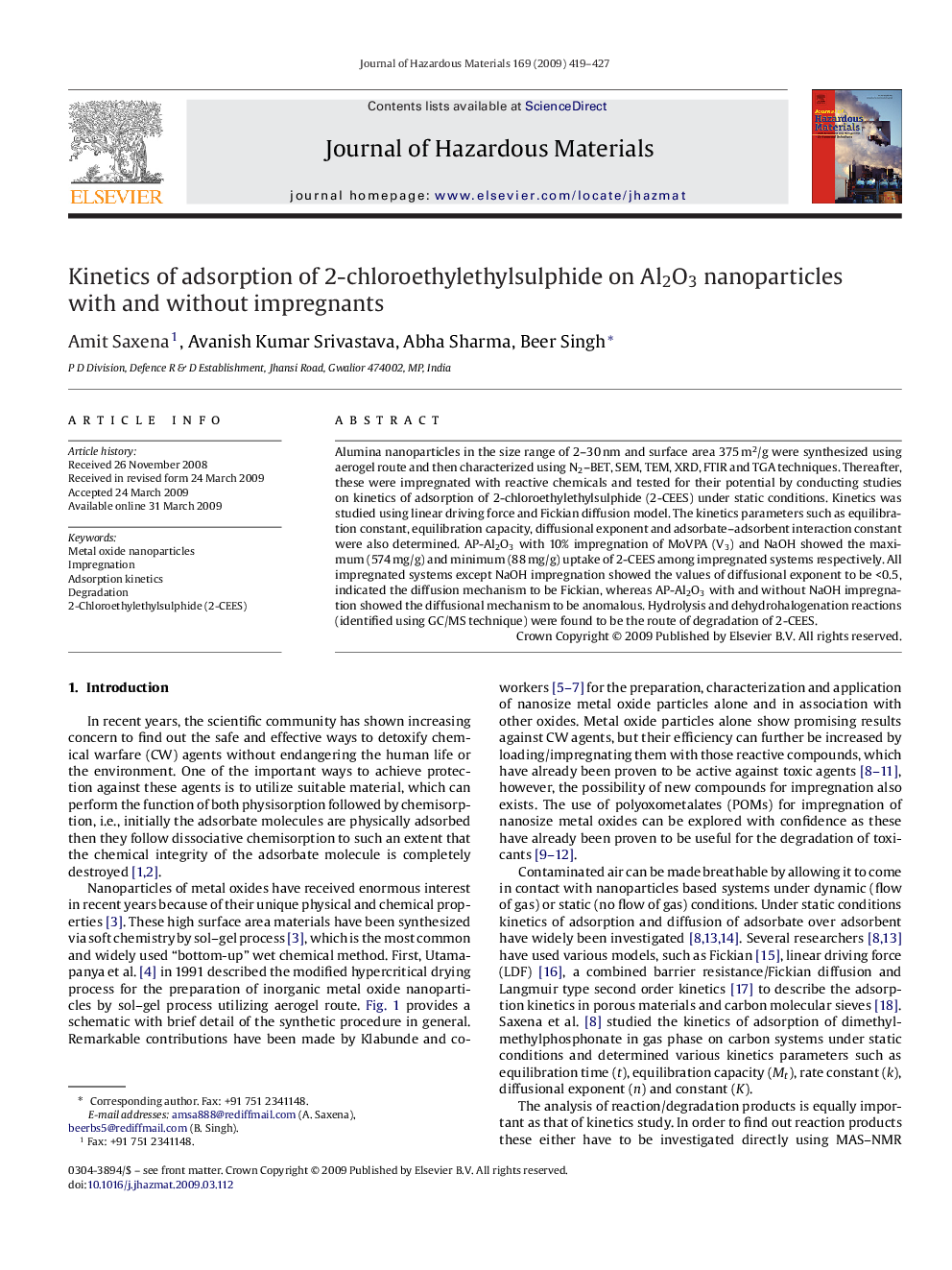| Article ID | Journal | Published Year | Pages | File Type |
|---|---|---|---|---|
| 581598 | Journal of Hazardous Materials | 2009 | 9 Pages |
Abstract
Alumina nanoparticles in the size range of 2-30Â nm and surface area 375Â m2/g were synthesized using aerogel route and then characterized using N2-BET, SEM, TEM, XRD, FTIR and TGA techniques. Thereafter, these were impregnated with reactive chemicals and tested for their potential by conducting studies on kinetics of adsorption of 2-chloroethylethylsulphide (2-CEES) under static conditions. Kinetics was studied using linear driving force and Fickian diffusion model. The kinetics parameters such as equilibration constant, equilibration capacity, diffusional exponent and adsorbate-adsorbent interaction constant were also determined. AP-Al2O3 with 10% impregnation of MoVPA (V3) and NaOH showed the maximum (574Â mg/g) and minimum (88Â mg/g) uptake of 2-CEES among impregnated systems respectively. All impregnated systems except NaOH impregnation showed the values of diffusional exponent to be <0.5, indicated the diffusion mechanism to be Fickian, whereas AP-Al2O3 with and without NaOH impregnation showed the diffusional mechanism to be anomalous. Hydrolysis and dehydrohalogenation reactions (identified using GC/MS technique) were found to be the route of degradation of 2-CEES.
Related Topics
Physical Sciences and Engineering
Chemical Engineering
Chemical Health and Safety
Authors
Amit Saxena, Avanish Kumar Srivastava, Abha Sharma, Beer Singh,
